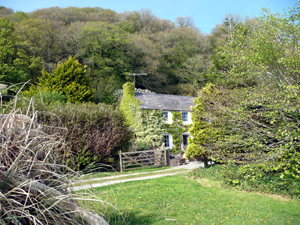
Salt House Farm
A pretty farmhouse set below the cliff, and one of several farms on what was once marshland.
In 1595, the first record of habitations occurs when the 'dairies' of Hurst House, East House and Brook House were noted in a Laugharne Corporation survey.
These three dwellings are either on the fringes of the marsh, or on islands of higher ground.
Drainage allowed for the establishment of new farms - a process that was complete by the 1840s - and by the late 18th-century
Laugharne Marsh comprised the best farmland in the county.
Charles Hassall (1794) described how the land could be made more productive by ridging-up the land by the use of the Dutch Plough.
Drainage work continued in the 19th century, and a large sea-wall armoured with stone, and a quay, were constructed at the east end of
the marsh in 1800-10 by George Watkins of Broadway and connected to Coygan Quarry by a tramway to bring stone straight to the ships.
Watkins's work seems to have been part of wide-ranging improvements as most of the farms (all part of the Broadway estate) were rebuilt
in c.1820 in a 'Georgian' style with a good range of outbuildings.
A Ministry of Defence research (or bombing) establishment was founded across part of the south and southeast portion of this historic landscape character area.
The Ginst beach is a remarkable wilderness right in the middle of Carmarthen Bay and accessible at weekends.
You head out of Laugharne and turn left after Broadway, but don't tell anyone... it's a secret amongst locals.
copyright © 2021 Laugharne Lines
all rights reserved